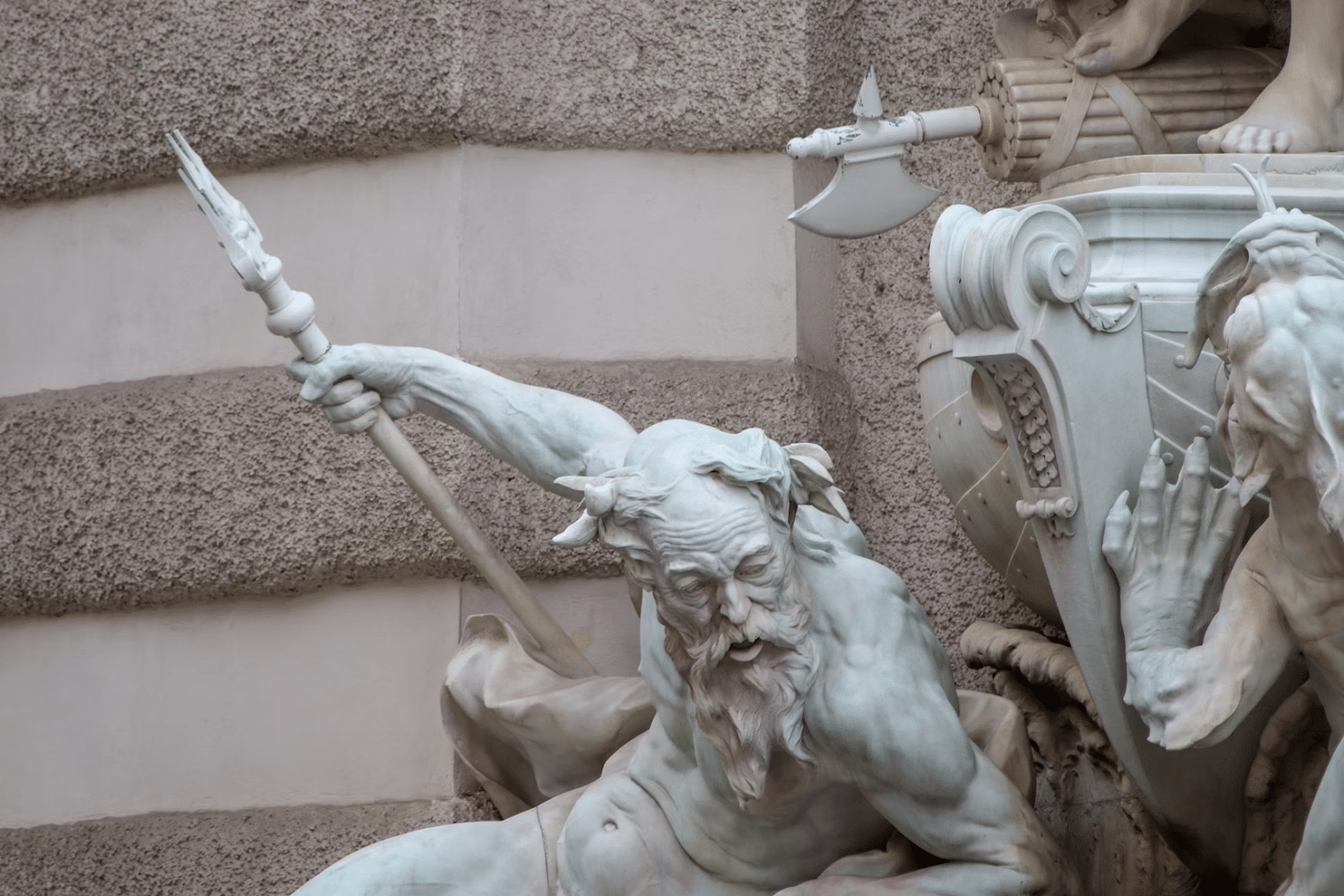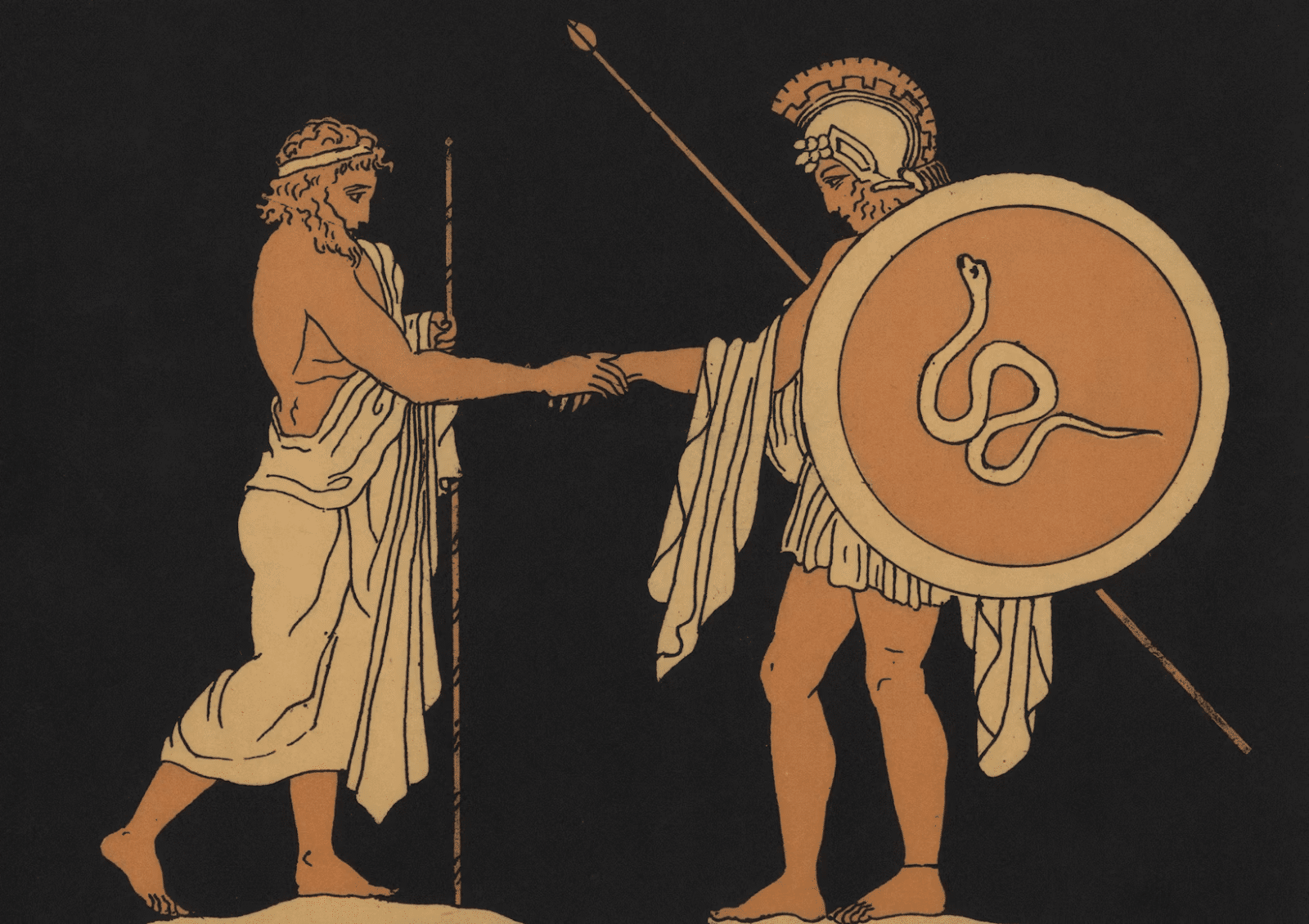If Norse mythology were a great hall, then The Poetic Edda would be the roaring hearth at its center – ancient, flickering, and full of strange shadows. It’s not a book in the traditional sense, but a collection of Old Norse poems that somehow survived centuries of storms, wars, and shifting beliefs. In these verses, gods make mistakes, giants speak riddles, and heroes chase glory and doom in equal measure.
Just as ancient skalds wove fate, chance, and fortune into their tales, many modern cultures still spin stories around luck and risk — from mythic quests to games of chance. It’s not unlike how people today explore https://zh.slotsup.com/online-casinos/singapore to experience their own version of risk and reward, though with far less danger of meeting a frost giant along the way.
This is the heartbeat of Viking-age storytelling – not the polished marble of later epics, but the raw timber beams, creaking under the weight of memory.

Alt text: A statue of a man confidently holding a sword, symbolizing strength and valor.
What Exactly Is the Poetic Edda?
At its core, The Poetic Edda is a manuscript called the Codex Regius, written in Iceland sometime in the late 13th century. But here’s the twist – the poems themselves are far older, passed down orally for hundreds of years before anyone bothered to write them down.
It’s called “poetic” because the verses use the alliterative, rhythmic style typical of Old Norse poetry. And it’s an “Edda” because of a handy naming convention – there’s also a Prose Edda, written by the Icelandic historian Snorri Sturluson, which works almost like a guidebook to these myths.
The Poetic Edda, though? It’s messier, wilder, and more like a mixtape of mythic and heroic ballads.
The Two Worlds of the Poetic Edda
The collection splits loosely into mythological poems and heroic poems.
Mythological Poems: Gods, Giants, and the End of Everything
These are the heavy-hitters – stories about Odin, Thor, Loki, and the strange, shifting world they inhabit.
One standout is Völuspá (The Prophecy of the Seeress), where a mysterious woman – dead, yet speaking – tells Odin the story of the cosmos: from its creation out of fire and ice to its fiery destruction at Ragnarök. It’s part creation myth, part doom-laden prophecy, and part cryptic riddle.
Then there’s Hávamál (The Words of the High One), which feels like Odin’s personal advice column. Some of it is surprisingly practical (“Don’t drink too much at a feast”), and some of it is pure mythic bragging (“Here’s how I hung myself on the world tree for nine nights to gain wisdom”).
Heroic Poems: Blood, Betrayal, and Fate
The second half of the Edda shifts from gods to mortals – though “mortals” here means legendary heroes like Sigurd the Dragonslayer.
The Sigurd cycle is tangled with love, betrayal, and revenge. Sigurd kills the dragon Fáfnir (a scene so famous it echoes in Wagner’s Ring Cycle), wins a cursed treasure, and gets caught in a knot of oaths and deception that ends badly for almost everyone.
These heroic lays don’t soften the blows – characters die, often brutally, and the poetry leans into the inevitability of fate. That same thrill of standing on the edge of fortune’s blade – knowing one wrong step could mean ruin – is something that still resonates today, whether it’s risking everything in battle or testing your nerve in modern games of chance like those explored in Aviator老虎机评测.
Quick Guide to the Themes of the Poetic Edda
| Theme | Mythological Poems | Heroic Poems |
| Main Focus | Gods, giants, creation, and Ragnarök | Legendary heroes, battles, oaths, and vengeance |
| Tone | Cosmic, mystical, sometimes humorous | Tragic, intense, fatalistic |
| Key Figures | Odin, Thor, Loki, Freyja | Sigurd, Brynhild, Gunnar |
| Core Questions | How was the world made? How will it end? | Can fate be escaped? What is honor worth? |
| Example Poems | Völuspá, Hávamál, Lokasenna | Fáfnismál, Helgakviða Hundingsbana, Guðrúnarkviða |
Why It Still Feels Alive
You’d think 800-year-old Icelandic verse would feel… well, 800 years old. But reading The Poetic Edda today is like opening a window into a sharp, wind-swept world.
For one thing, the imagery is startlingly vivid. A dwarf forges treasure in the heart of a mountain. A frost giant’s skull becomes the sky. Wolves chase the sun and moon until the day they finally catch them.
And there’s the tone. Unlike some mythologies that paint gods as perfect, the Norse pantheon is gloriously flawed. Odin sacrifices eyes and relatives in his relentless pursuit of knowledge. Thor charges into battles without thinking them through. Loki… well, Loki can’t resist causing trouble, even when it leads to his own downfall.
That humanity – in both mortals and gods – is part of what keeps these verses breathing.
The Role of the Poetic Edda in Norse Culture
Imagine being a 10th-century Icelander on a winter night. There’s no Netflix, no radio, just the long darkness and a fire. Someone begins reciting Völuspá, and suddenly you’re not just sitting in a smoky hall – you’re watching the birth of the world, hearing the footsteps of giants, feeling the weight of doom in the air.
The Poetic Edda’s verses were not just entertainment; they were cultural memory. They taught values – courage, hospitality, the acceptance of fate – while keeping history and myth intertwined.
For the Vikings, the Edda wasn’t just “literature.” It was a worldview in verse.
A Few Poems Worth Meeting
You could spend months with The Poetic Edda and still find new corners to explore. But here are a few to start with:
- Völuspá – The cosmic origin story and apocalypse in one haunting recitation.
- Hávamál – Odin’s wisdom (and occasional warnings), part practical, part mystical.
- Lokasenna – Loki crashes a feast and insults every god in the room, with devastating wit.
- Vafþrúðnismál – A wisdom contest between Odin and a giant, where the stakes are life and death.
- Grímnismál – Odin, disguised and tortured, reveals cosmic secrets about the Nine Worlds.
- Fáfnismál – Sigurd and the dying dragon exchange words in a moment that’s both eerie and legendary.

Alt text: Illustration from ancient Greece showing two men engaged in a handshake, symbolizing unity or partnership.
Reading the Poetic Edda Today
There are dozens of translations, and they all read differently. Some aim for literal accuracy, preserving Old Norse structure, while others try to capture the poetry’s spirit in modern English.
A few recommendations for newcomers:
- Carolyne Larrington’s translation (Oxford World’s Classics) is clear, readable, and scholarly without feeling dry.
- Jackson Crawford’s version is approachable, with helpful introductions that make sense of the sometimes chaotic arrangement.
- If you’re feeling bold, there are even Old Norse editions with side-by-side English.
Don’t worry if some stanzas feel cryptic. These were oral poems – part of the magic is that they leave space for mystery.
The Poetic Edda’s Modern Echoes
Even if you’ve never cracked the Edda, you’ve felt its influence. J.R.R. Tolkien borrowed from it for The Lord of the Rings – Gandalf’s wisdom owes a debt to Odin, and the dwarf names in The Hobbit come straight from the poem Völuspá.
Marvel’s Thor films play fast and loose with the myths, but the core characters – Odin, Loki, Heimdall – are Edda-born. Video games like God of War: Ragnarök and Assassin’s Creed Valhalla have brought these stories to a new audience, blending them with interactive storytelling.
The Edda’s themes – fate, honor, loss, resilience – resonate because they’re timeless. We might not be fighting frost giants, but we still wrestle with choices, consequences, and the knowledge that nothing lasts forever.
Why It’s Worth Your Time
Reading The Poetic Edda is not like reading a modern novel. There’s no single narrator guiding you, no neat chapter arcs. It’s a series of voices – gods, giants, heroes, sometimes even animals – speaking across centuries.
It’s a reminder that myth was never meant to be locked in glass cases. It was meant to be spoken, argued over, remembered, and reshaped with each telling.
If you open the Edda with patience, you’ll find that those old voices still carry. They can whisper, joke, warn, and even shout across a thousand years – and still make you feel the chill of a long northern night.
Final Thought
The Poetic Edda isn’t just a relic of Norse mythology – it’s a living ember. Its verses still crackle with the fire of the mead hall, the roar of the sea, and the cold breath of the mountains.
Whether you’re a mythology fan, a fantasy reader tracing stories back to their roots, or simply curious about how our ancestors saw the world, the Edda offers something rare: a doorway into the mind of a people who knew the world could be harsh, beautiful, and fleeting – and who set that truth to verse.
